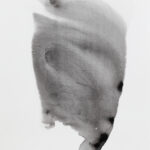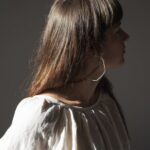Karin Dilthey – Photographer
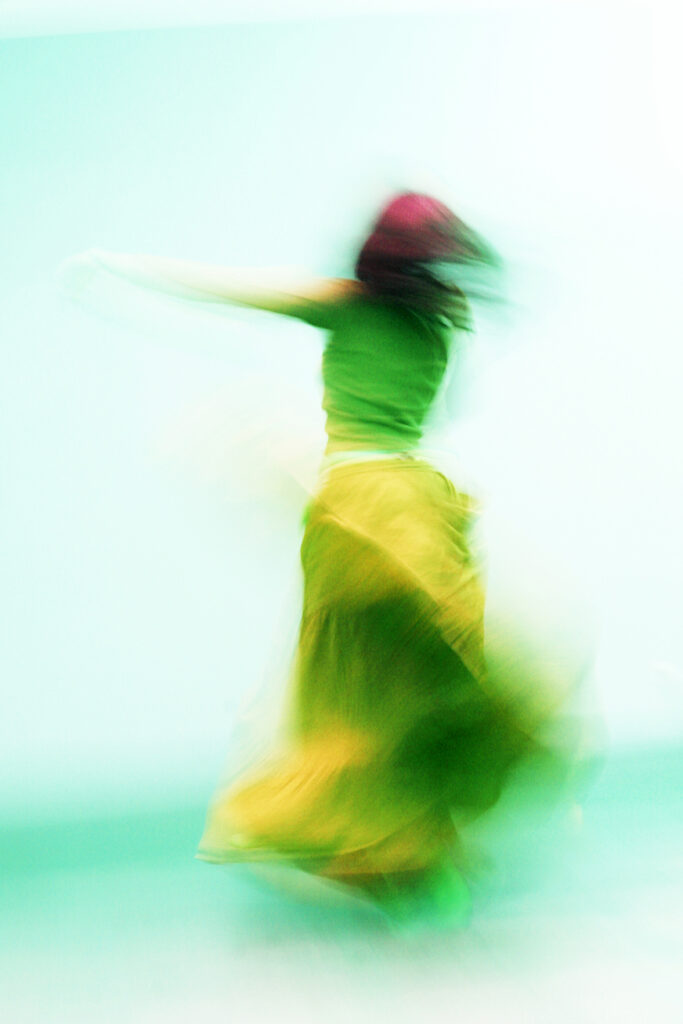
Series – La virvoltante
When I first saw Karin Dilthey’s photographs, I was immediately struck by the beautiful and sometimes lush palette of greys. A closer look revealed many other appealing elements such as a perfectly well-balanced composition, a sense of colour, the choice of the subject and not in the least a form of mystery. But first let me get back to the greys and why they appealed to me. Before coming to the Drôme I lived in Holland, the Low Countries by the Sea. The climate as everyone knows who has visited The Netherlands is wet and even when the weather is fine the air is saturated with water from the North Sea and the rivers that flow through the major part of the territory. Dutch landscape painters who know the effect on colours when the light is filtered through the many layers of moisture in the air, as if through a prism, often refer to the “coloured greys” in their paintings which they render in many gradations.
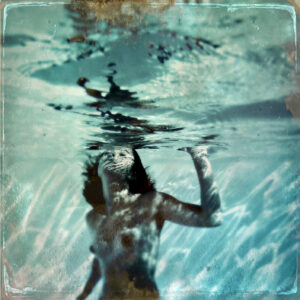
Series – Naïades
The warm and contrasting colours that Monet used during the three journeys he made to Holland lack the grey silvery tones of his Dutch counterparts. His “French eye” was unable to capture them. Another French painter, Amand Gautier, simply refused to believe that Dutch painters were capable of seeing the colours of their country correctly! To my surprise, on discovering Karin’s photographs I was struck by the infinite nuances of “coloured greys”, like those I particularly admire in the watercolours of the late 19th century painters of the School of The Hague. They are soft and subdued and the brighter colours, a red, an ochre, a green, literally sparkle like gems in a pearly setting. Other photographs sometimes resemble some of Turner’s beautiful vaporous watercolours. In one of Karin’s books “Les Fentes” for instance as you move from the first photographs of the series to the last the “coloured greys” are gradually reduced to a tone that tends towards black. This quality in her use of light and colour alone is enough to make looking at Karin’s photographs a rewarding artistic experience.
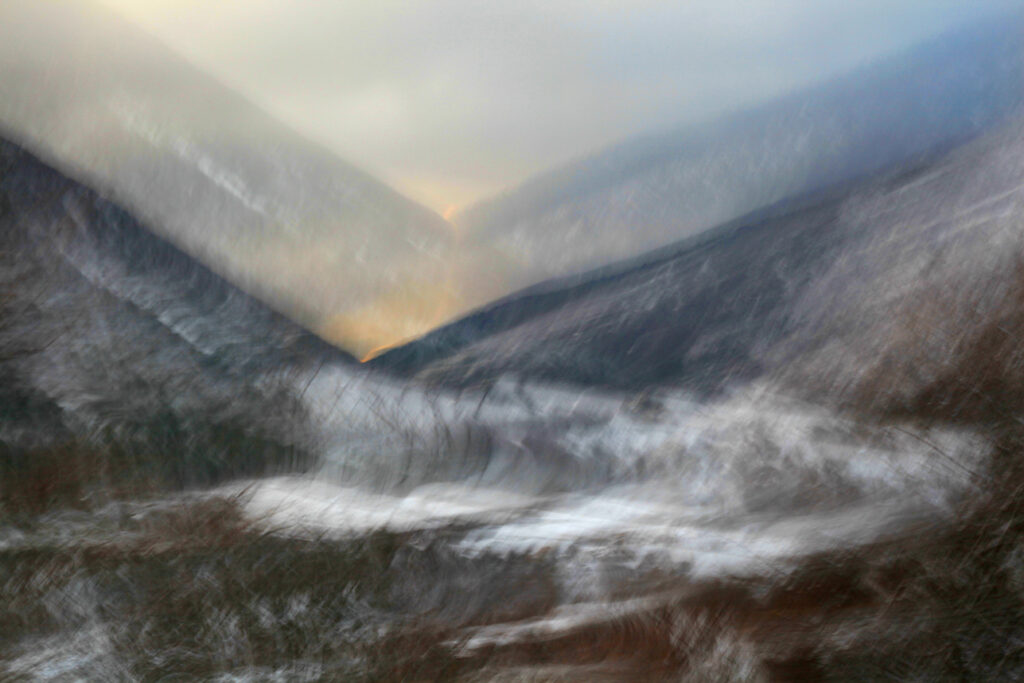
Series – Collines
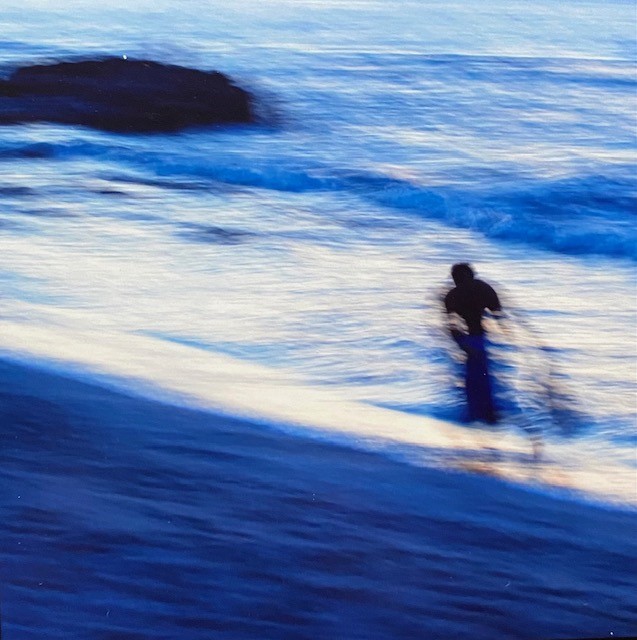
Untitled
But there is more. There is a remarkable play of shadows in Karin’s photographs and they are full of movement. Nothing is static, nor is anything definite. The world she depicts is fluid and mobile. Hazy, as though she is peering at life through half closed eyes? The forms in some of her land and seascape series are vaguely recognisable for movement promptly blurs them and the abstracted image becomes “audible”. At least that is the effect they have on me. I can hear the rustle of leaves in the breeze and feel the force of a tearing high wind in a series called “Collines”. In another series “Flux aquatiques” it is the pattern made by the water as it spreads across the sand that counts or the white waters of breaking waves that disperse the surrounding light against a leaden sky.
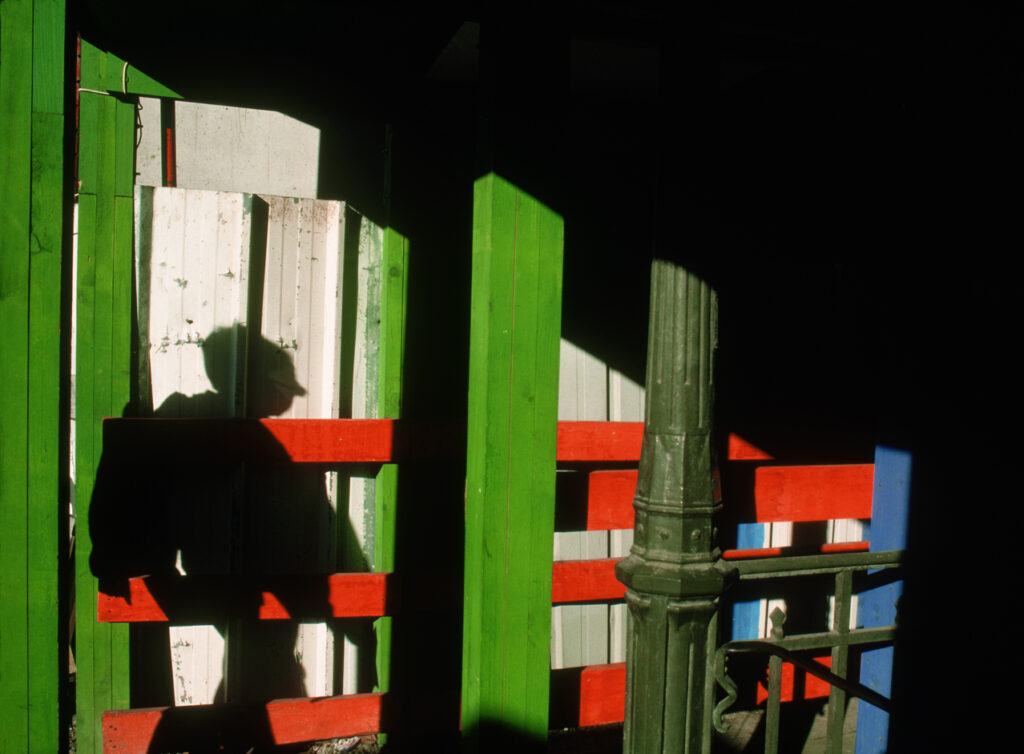
Series – Ombres et lumières
People in many of Karin’s photographs become reflections of themselves. She remembers the time in Paris when she toured the capital with her camera on her scooter at the hours when shadows lengthen so that she could catch their silhouettes cast against the walls or on the pavement. Here again this results is poetical, mobile and often mysterious compositions that feed the imagination.
I thoroughly enjoyed interviewing Karin who like so many other artists have found a setting and an atmosphere in the Drôme that inspires creative spirits.
INTERVIEW
Question
As a child did you have an aptitude for drawing, painting or some other form of creativity and how did you become a photographer?
Answer
As a child in Germany where I come from, I was encouraged to draw and to do all kinds of handiwork. I had a curious nature and we had a big garden in which I liked to play and to study the plants and all the goings on of life outside. I also spent a lot of time in the Alps. There was largely enough subject matter in these settings to feed my imagination.
I worked in Paris as a professional independent photographer for 30 years. I specialised in sports, portraits, fashion, architecture and hotel photography. My love of the landscape and my connexions with the golf world – I was a good golfer – led me to specialise in golf course photography. As such I travelled on assignment to several countries for specialised journals in order to capture the overwhelming beauty of the magical light and elongated shadows that delineate the course’s undulating landscape. One feels insignificant in these imposing settings. I am still a regular contributor to the Figaro’s golf column.
But concurrently I have developed a more creative form of photography. By using a slow-motion technique which I have perfected in the course of time I am able to transform reality and create another world in which I like to draw viewers into their buried emotions, vague memories, other forms of beauty and into an imaginary world on condition they dare let loose of their comfort zone. The world they then have access to is both confusing and particularly stirring.
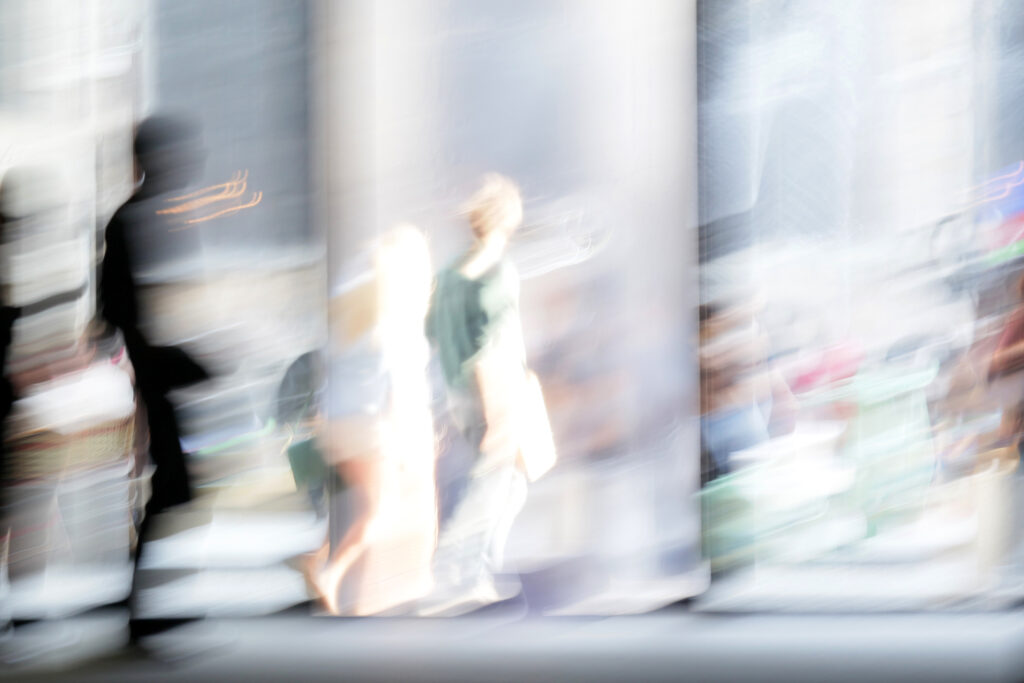
Series – Silhouettes humaines
I once photographed human figures that gradually fade away, turn into silhouettes, into shadows or pure colour; souls that inhabit an imaginary world. They are less and less recognisable and gradually become abstractions, timeless, universal and elements of pure emotion.
Question
Do you favour a special technique or method for your creative work?
Answer
I frequently make some trials before I shoot. Digital photography that makes it possible to see the subject on the sensor have facilitated research tremendously. Certain images or parts of images intrigue me, challenge me, draw me out of reality. I discover something in the viewfinder and off I am, under pressure to find out additional possibilities.
Technology has made it possible to create another universe. For example, starting with a photograph of branches from a tree a kind of white landscape may emerge, cracks in the ground can be perceived. Or, perhaps the curved lines of a body? It falls apart, transforms itself and results in a form of abstraction, but an abstraction that preserves depth and volume. It remains however a landscape. Infinitely large or infinitely small. It doesn’t matter. You can move around in the image like an astronaut or a diver.
Question
What is it you are looking for in your art?
A poem by Friedrich Hölderlin marked me when I was at school. He talks about man in relation to the gods. “The human being buffeted by the waves of the sea, hurled against the rocks, thrown back…without hold and minute in the violent elements of nature such as a raging sea.” These thoughts were perhaps in the back of my mind when I made certain photos of nature in turmoil and it could be that they express my own existential questions. And then again there are figures in other photographs who plunge, reappear and disappear. Are they real or imagined dreams and do they illustrate my own doubts with regard to the perception of reality? Who knows!
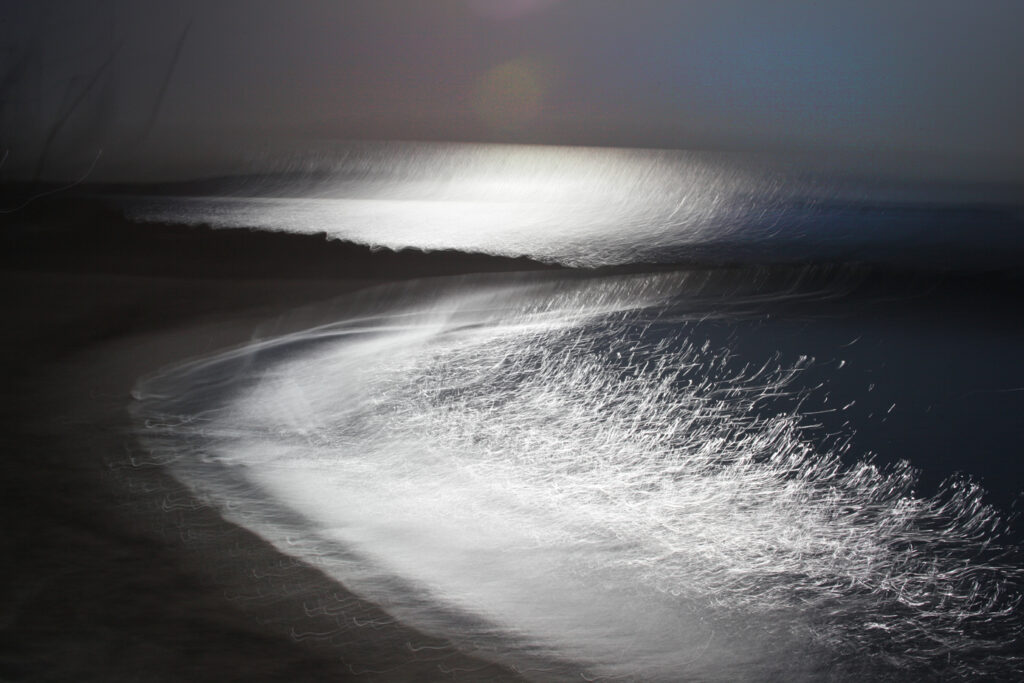
Series – Flux aquatiques
Question
Name some well-known photographers you admire and who are a source of inspiration for you. If so, why?
Answer
Henri Cartier-Bresson without any doubt. His compositions are perfect, they speak to me and they are full of poetry as well as humour, qualities I greatly appreciate. And then there is the Belgian photographer, Harry Gruyaert. When I discovered his photographs in 1988-1990 it came as a shock. I immediately felt that he was a kindred spirit. He is, as one reviewer wrote, “one of the rare European pioneers to consider that colour has a purely creative dimension, an emotional and radically graphic perception of the world.” I feel that he is exactly on the same wavelength as I am.
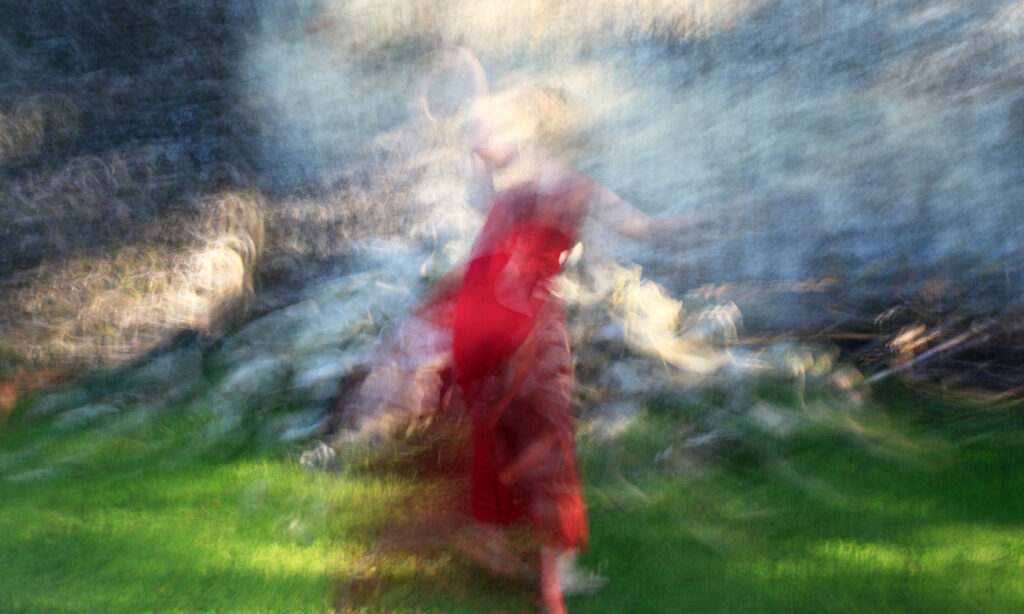
Series – La rouge
Question
Do you believe that AI will one day be able to convey the same emotion as the individual photographer and as a consequence render human creation obsolete?
From a general point of view, why make art in a world that is crumbling under humanitarian, climatic and other serious problems of survival?
Answer
If AI can arouse emotions, why not. It might however prove to be a serious competitor in the field of commercial photography, but this does not concern human creativity for the need to create is personal and cannot as such be replaced. It allows us to preserve a small space where we as individuals are free, genuine, and able to experience beauty and hope.
Question
Finally, do you agree with the Franco-American photographer Elliott Erwitt when he says “I think that the best you can do in photography is to evoke emotion, draw tears or make people laugh.”
Answer
Elliott Erwitt is known for having made some very humoristic photographs. It is true that a good photograph evokes emotions. My aim, however, in the first place is to create my own worlds after which viewers are free do with “that world” whatever they wish. Ideally an emotion is shared and that touches me because it is a moment of complicity.
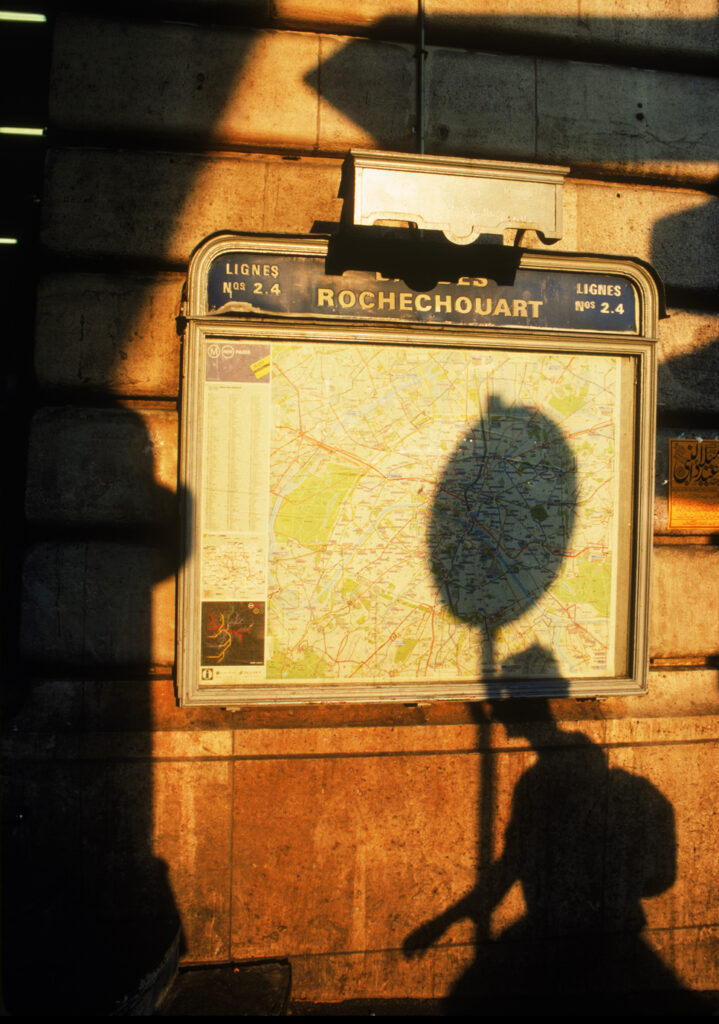
Series – Ombres et lumières
Posted in: Art
